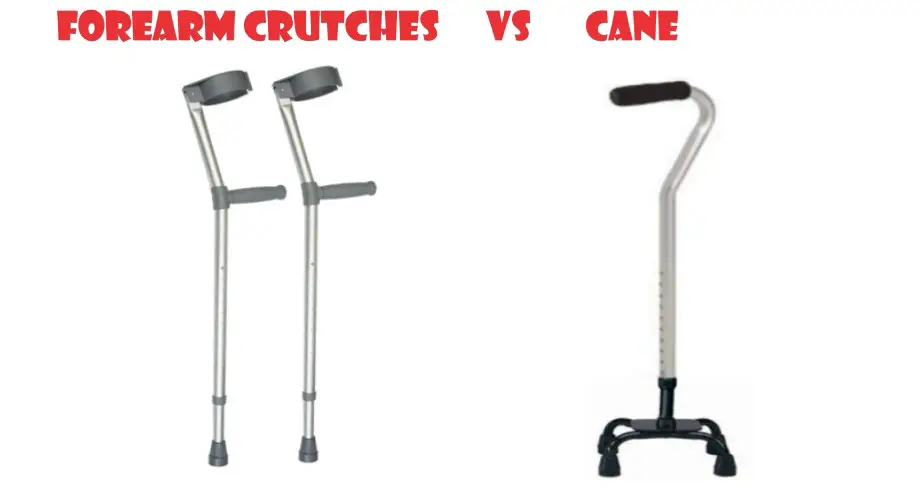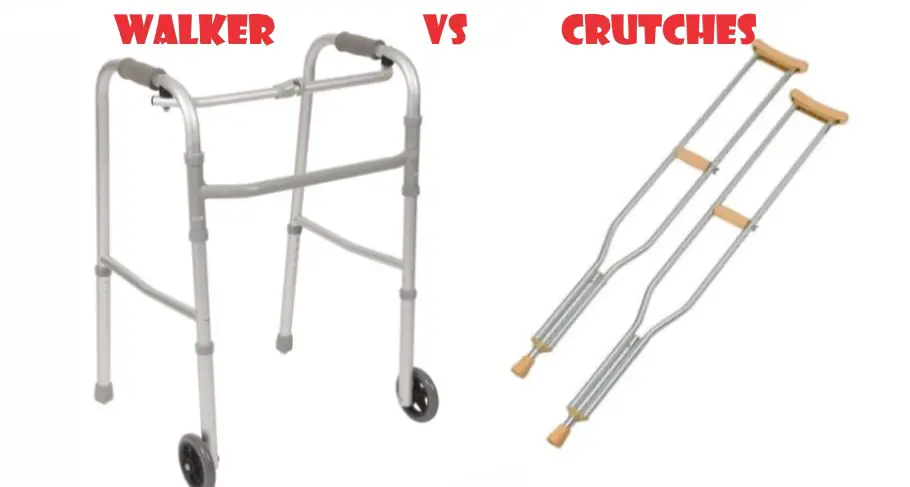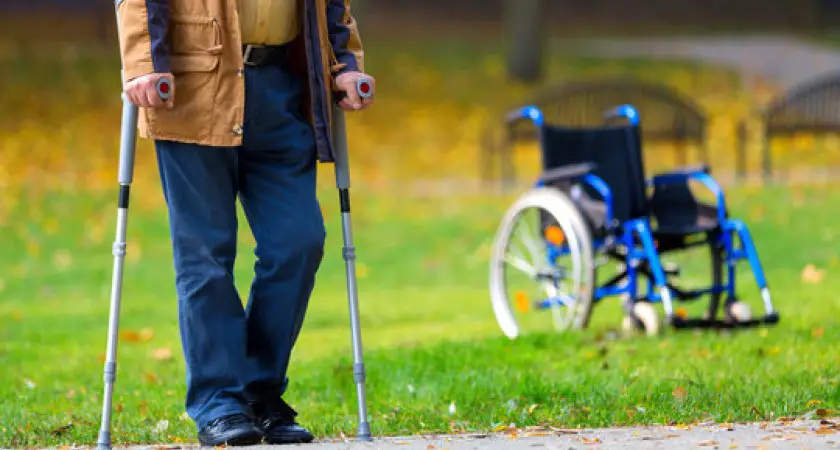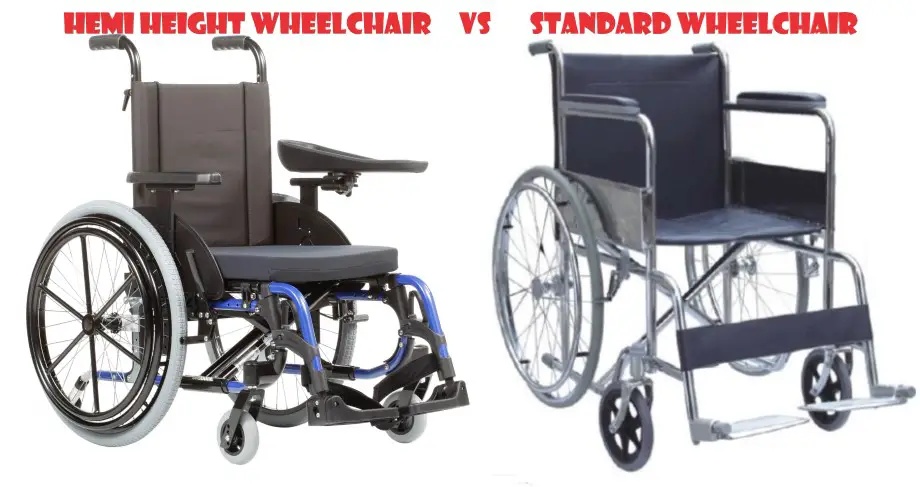People with disabilities are usually advised by their physicians on which walking aid or mobility device to use.
But what happens when the choice is left to the patient?
Forearm crutches and canes are both suitable devices used by people with mobility difficulties. They both have their advantages and disadvantages.
This makes it even more confusing when it comes to picking one between the two mobility aids.
This confusion can be greatly reduced when both mobility aids are looked at objectively with their features and specificities, which shall be highlighted in this article as you read on.
The information contained therein will make it easier for you to choose the mobility aid that works better for you, depending on your health needs and personal preference.
Table of Contents
- The Forearm Crutches
- The Cane
- Differences between the Forearm Crutches and Cane
- Similarities between Forearm Crutches and Canes
- Final Verdict: Which is the Right One for You?
The Forearm Crutches
Forearm crutches are used as a walking aid by people who cannot, for various physiological reasons, move around on their legs unaided.
It is more prevalent among people who have leg injuries or conditions that require a lengthy time to heal.

You need to have a fairly strong upper body core to be able to properly use the forearm crutches. People can train to build this strength and learn the proper way to use the crutches.
This is the most undesirable part of using forearm crutches; having to practice extensively before getting the hang of it. Its benefits are tremendous when mastered, but the process of getting there is not an easy one.
It helps for better posturing; this is more evident after the duration of use is over. The crutches are also easier to navigate when climbing or getting off the stairs.
Another distinct advantage is that it does not affect the nerve plexus of the upper limb, as seen with underarm crutches.
Related: How to Measure Crutches Correctly
Description
They are also called elbow crutches and usually come with handles and a cuff.
The cuffs stop just below the elbows, allowing for the user to properly grip the handles of the crutches with their hands. They also support the upper bodyweight of the user even when the hands are not fully resting on the handles.
In addition, they are often lightweight with heights that stop around the midriff of the user. This makes them easier to carry.
The Cane
A cane is a mobility aid used by people who need to take some of their body weight off their legs. This could be due to an injury or an ailment like arthritis.
It helps in the rehabilitation of patients who are healing from fractures and the like, but it also serves as a long-term plan to relieve people of the pain that comes with muscle, joint, or bone problems that render them temporarily or permanently sore or swollen.

It is, however, not suitable for use by people who have been advised against any weight-bearing whatsoever with their lower limbs.
Some people who start with crutches in their rehabilitation journey eventually ease into using canes as their healing progresses.
This is because of how much lighter and less cumbersome a cane is when compared to the other mobility aids.
Related: Adaptive Stroller vs. Wheelchair: Here’s the Right Choice
Description
Canes usually come as single straight structures that have a wide stable base to give their user adequate stability.
They have a handle at the topmost part of the length, which is umbrella-shaped and is used for gripping or holding on to when moving.
The user holds it in the hand adjacent to the leg that needs support.
They are traditionally made of wood but recent models are made of aluminum bodies with adjustable heights and multiple legs for better weight-bearing and stability.
Differences between the Forearm Crutches and Cane
- Forearm crutches are designed for support and stability while a cane is designed traditionally for stability
- Forearm crutches can be used immediately after rehabilitation commences, regardless of whether or not the patient’s leg can bear weight. Canes cannot be used by people who have been advised to stay completely off their legs or foot
- Forearm crutches require more practice and technical know-how to be able to wear them properly for maximum benefits. Canes do not require any training to be adequately used by the patient
- Forearms are more cumbersome than canes. Canes have a smaller frame, and this makes it easier for them to be handled by the old
- Forearm crutches require the use of both forearms and hands. Canes require the use of only one
- Forearm crutches can better serve overweight people than the canes
Related: Best Disability Products for Seniors
Similarities between Forearm Crutches and Canes
- They are both used by people with mobility problems
- They can both be used for long-term purposes
- They both require the use of the forearm and hands
Final Verdict: Which is the Right One for You?
Choosing the right mobility aid is of utmost importance in the proper progression of a person’s rehabilitation efforts. Picking the wrong one can greatly impede the healing process and, in some cases, make the person develop more health problems than they had before the use of that device.
Whether you are looking at starting with forearm crutches and then getting a cane, or you want to stick with only one for your entire healing journey, you need to adequately explore your options objectively.
The forearm crutches are perfect for people with extensive leg injuries or disabilities that prevent them from being able to place their legs or foot on the ground.
They are also more suitable for people whose conditions require the support of both hands and arms.
The cane, on the other hand, is perfect for elderly people with no significant injuries but who have painful conditions that impair their gait, posture, and balance.
It requires little to no upper body power, which also makes it the most ideal for the elderly. It is also preferred for people who live in tall buildings with staircases.
People with minimal leg injuries could equally opt for the cane because it is light enough to provide stability, yet not so heavy that it becomes a burden where there is no need for it.




